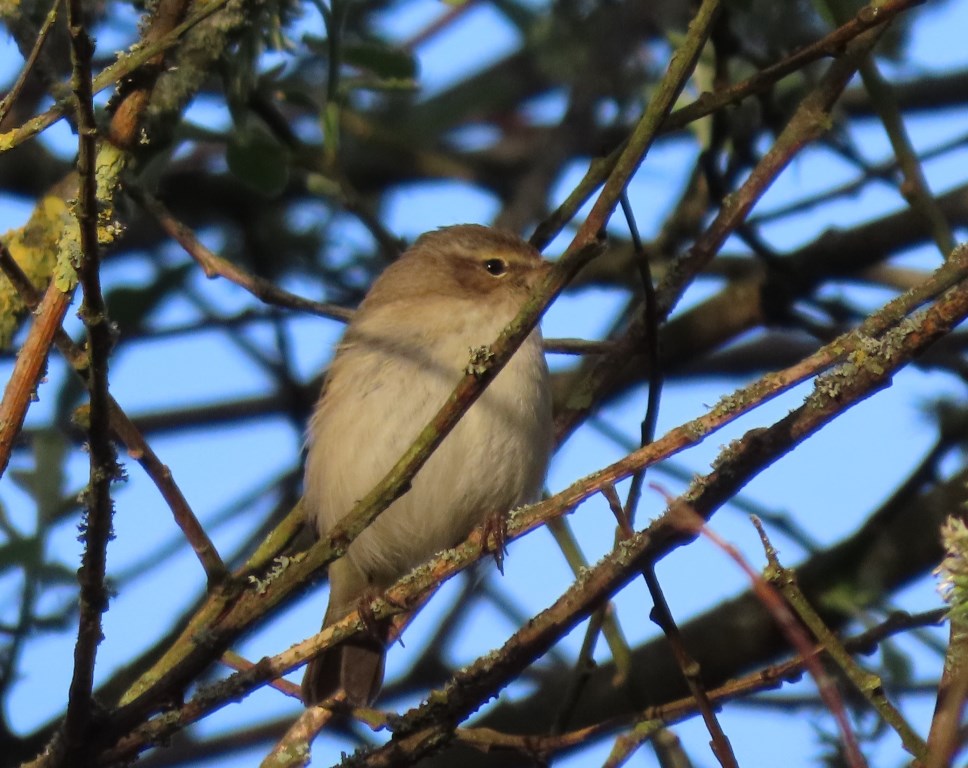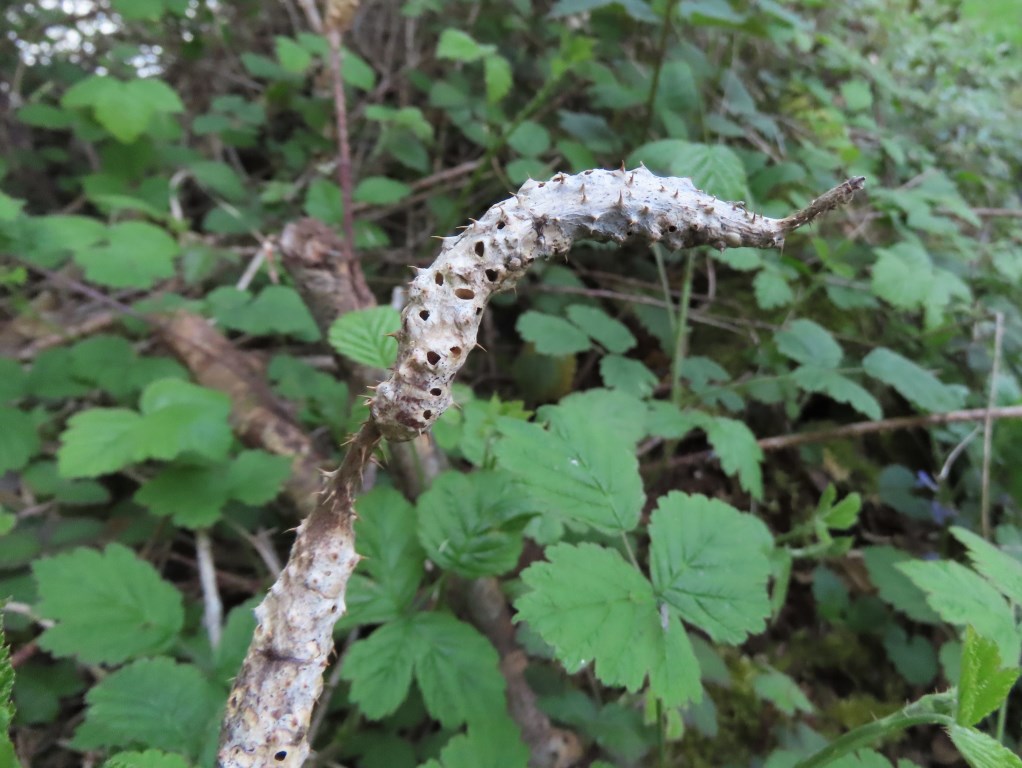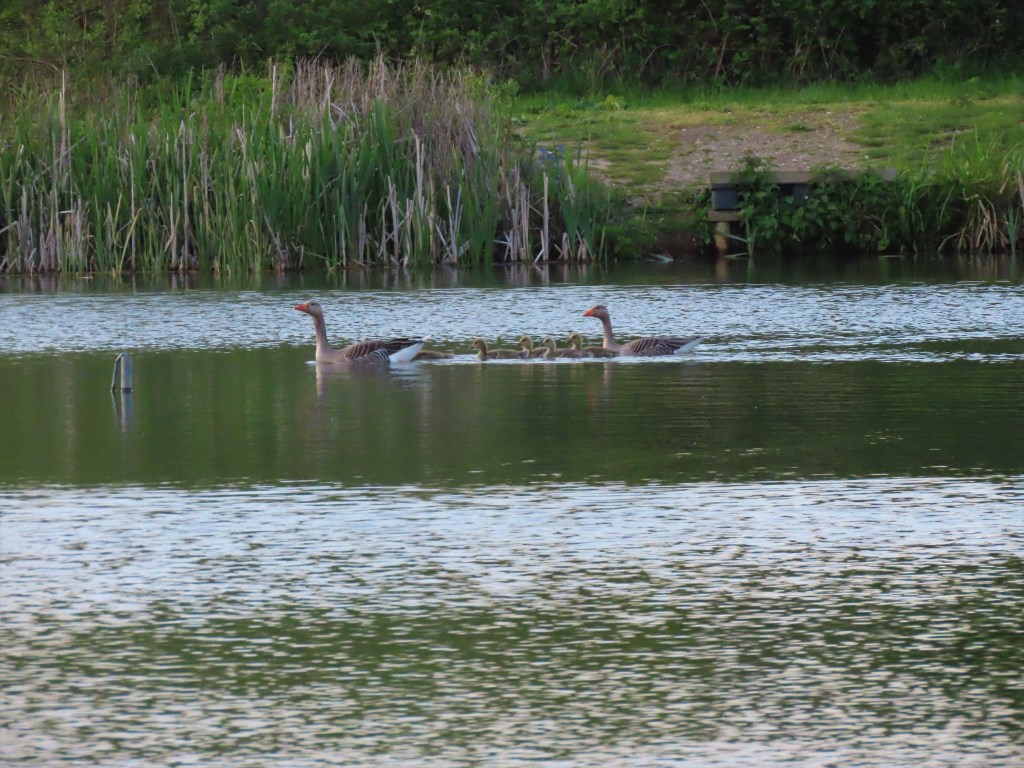John Lerpiniere led an evening walk to listen to Nightingales on Wednesday 3 May. While members gathered at the southern end of Pingewood Road North, two Swifts flew overhead and Chiffchaff and Blackcap were heard. After a short walk eastwards along Berry’s Lane, the route led into the Searle’s Lane gravel pit complex. A big apple tree at the entrance to Searle’s Lane was densely covered in blossom. The explosive call of a Cetti’s Warbler was heard, a sound which would be repeated from time to time throughout the walk. A Garden Warbler sang from deep in a tangle of bramble, then snatches of song from the first Nightingale were heard. Frustratingly, it remained hidden in the undergrowth and soon stopped singing. The walk continued eastwards along the main east-west path through the gravel pits. A pair of Great Crested Grebes were swimming together on the lake to the south. Buzzing calls came from a party of Long-tailed Tits. Galls of the wasp Diastrophus rubi were found on a bramble stem. The path led to a car park area for fishermen on the eastern side of the gravel pits. A Roe Deer was disturbed from the picnic area. The bank in front of it was white with seed-heads of Coltsfoot. Two Greylag Geese escorted their five goslings down to the water. On the other side of the car park, bees were still foraging on flowers of Green Alkanet, even though it was already well after sunset. The walk continued along the south-east side of the gravel pit complex, normally a good place to hear Nightingales but alas not on this occasion. A patch of the Dog Vomit slime mould Fuligo septica was found on a dead branch and Hops and Cuckooflower were seen. With the light beginning to fade, the group turned round and retraced their steps back along the main east-west path. Looking across to the far side of the lake to the north, white blobs in the trees next to the water’s edge turned out to be roosting Little Egrets. A Grey Heron was spotted in the trees to the left and a Cormorant was perched near the top of a tree to the right. Down by the water’s edge, a juvenile Cormorant with brownish plumage and a pale belly was perched on a dead branch which projected from the water. Continuing back along the track, tall Japanese Knotweed plants were a worrying find. The group returned to the spot where the only Nightingale had been heard earlier in the evening. Initially only Blackbirds, Robins and Blackcaps were singing. It was almost dark and bats swooped low overhead. Then a few phrases of Nightingale song were heard. Then finally the group were rewarded with a much louder and very varied song. Then a second bird joined in, louder still and closer to the path (although once again, nobody was able to see it). A fisherman came past and reported that he had heard 5 or 6 Nightingales at dawn, singing at one of the places where we had expected to hear them earlier, but had failed. It was almost completely dark for the final walk back to the cars.




Pictures by Fiona Brown
